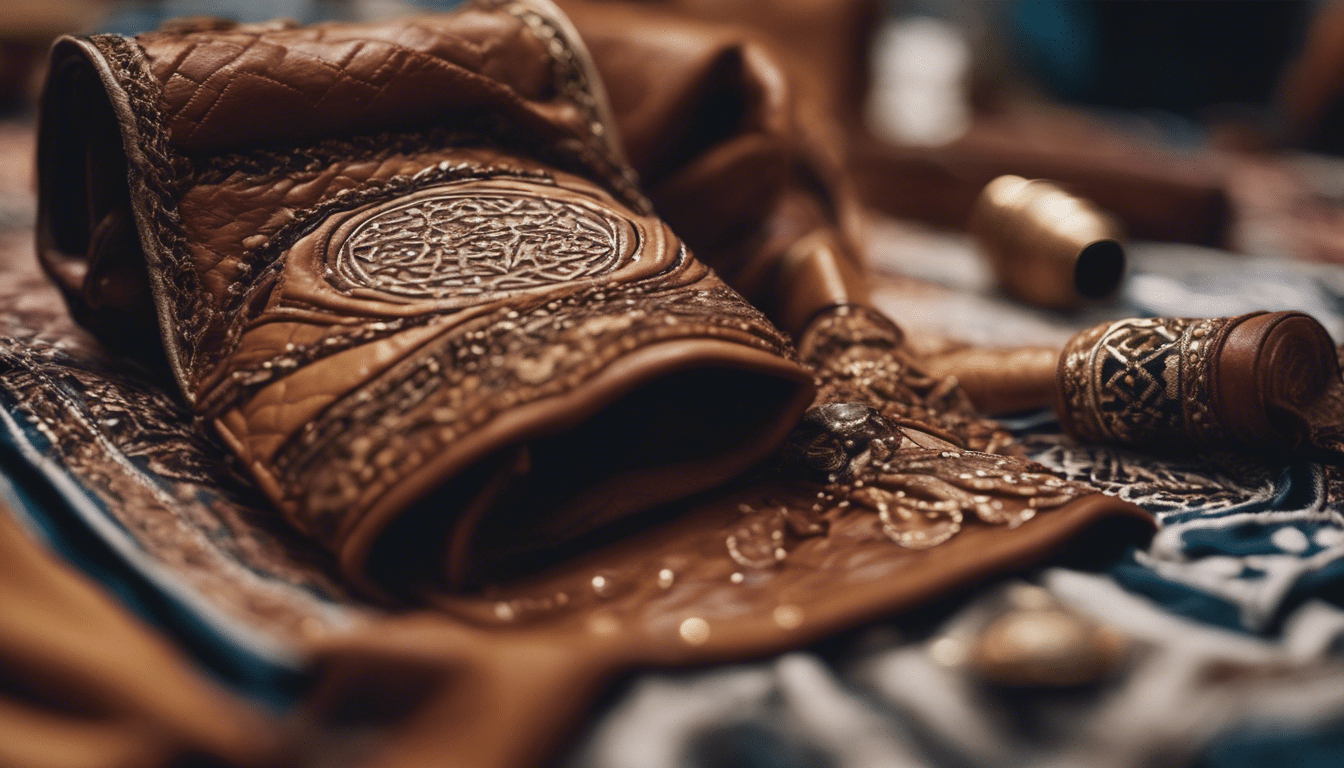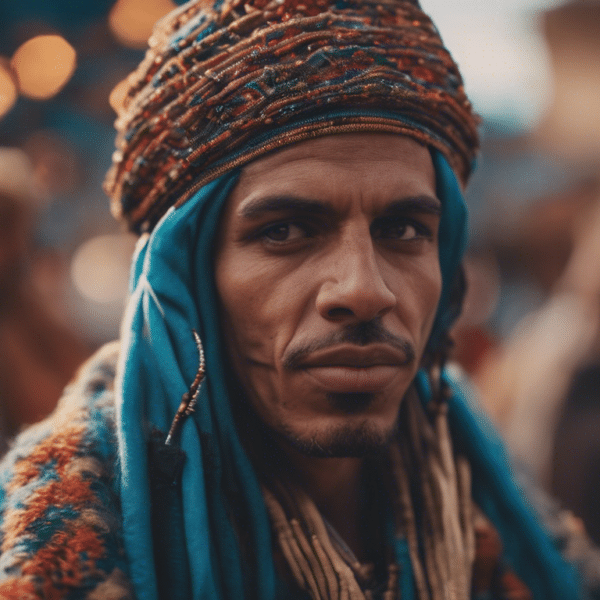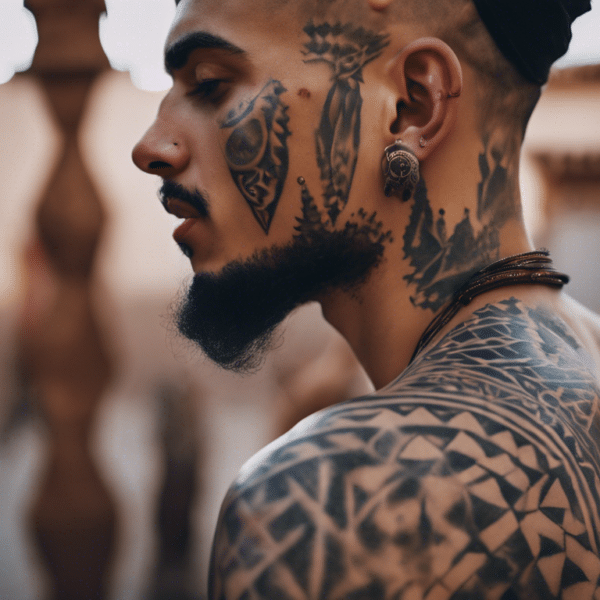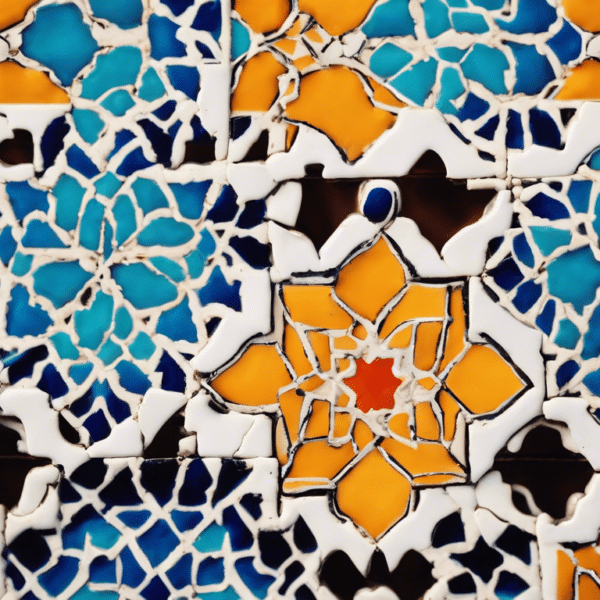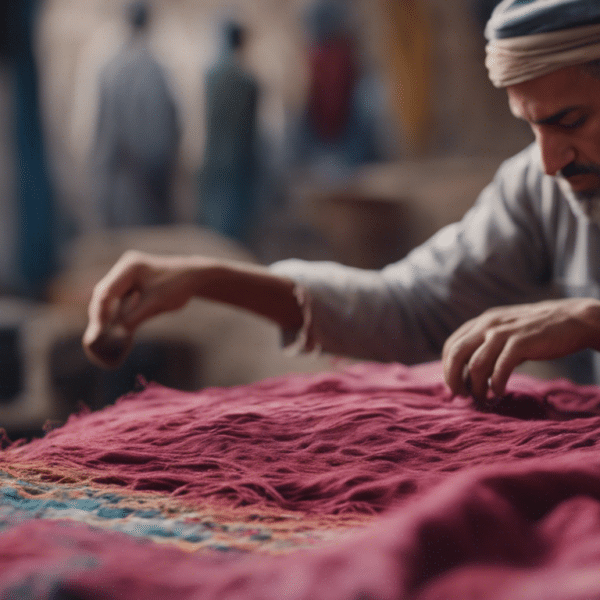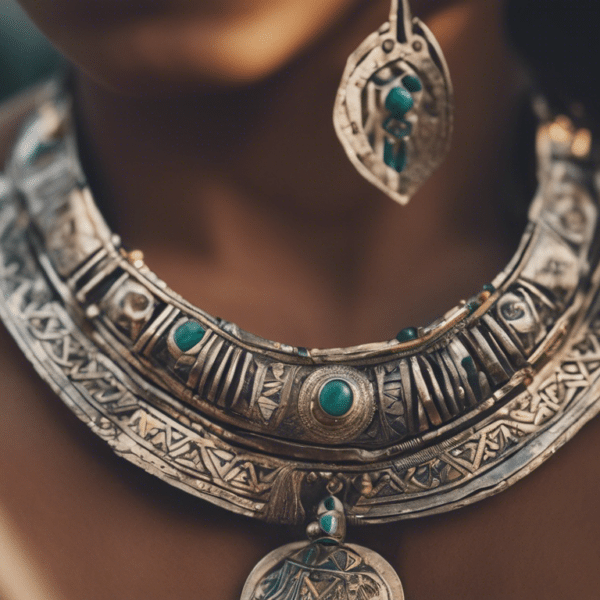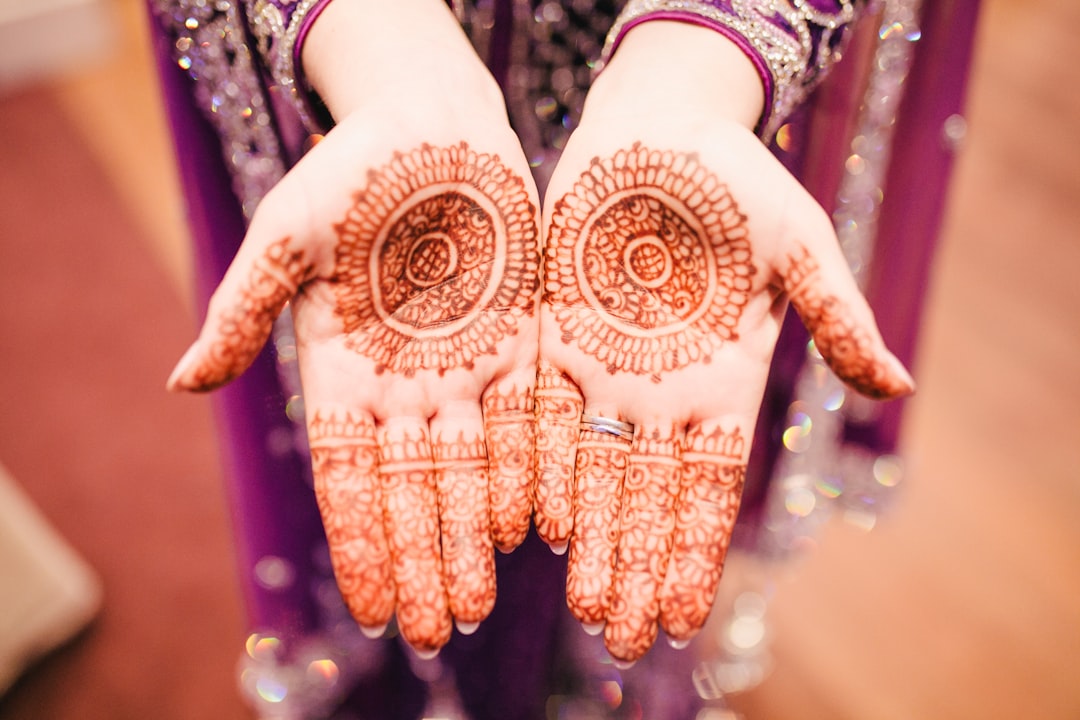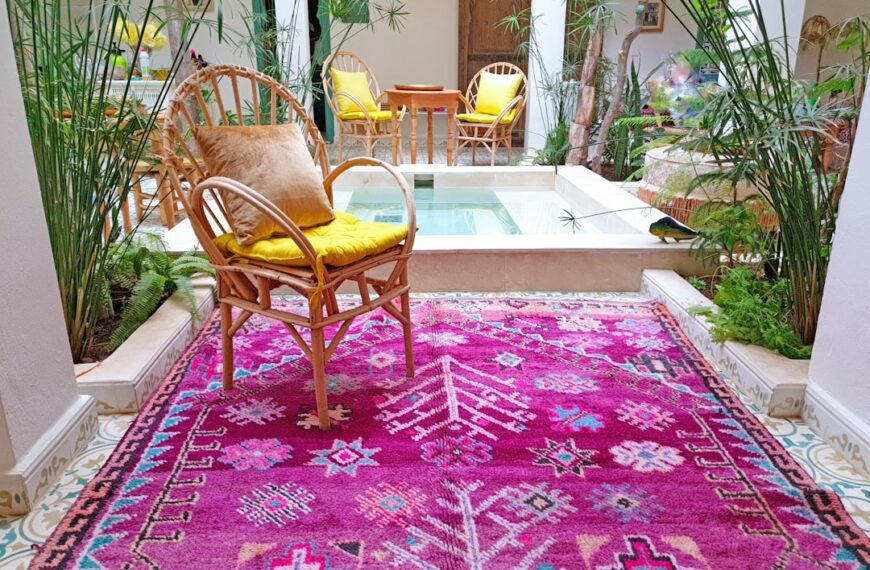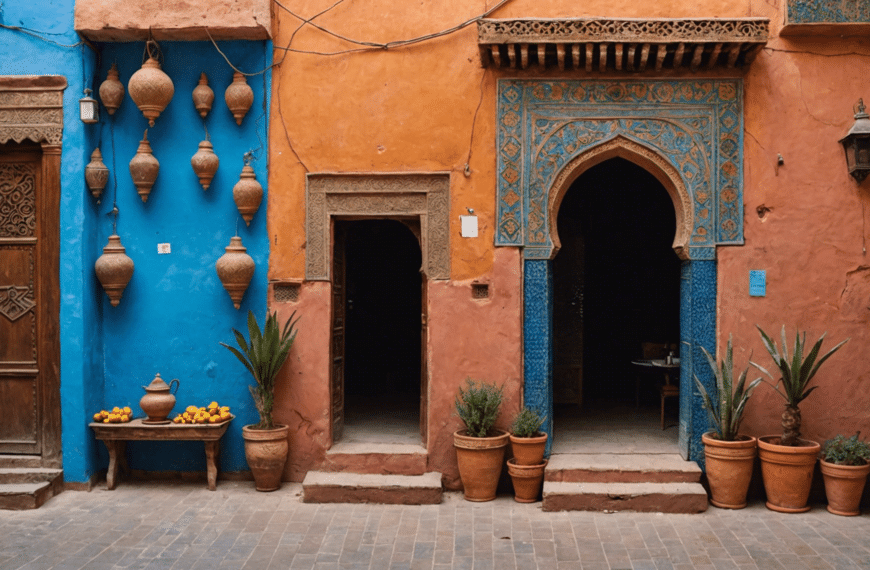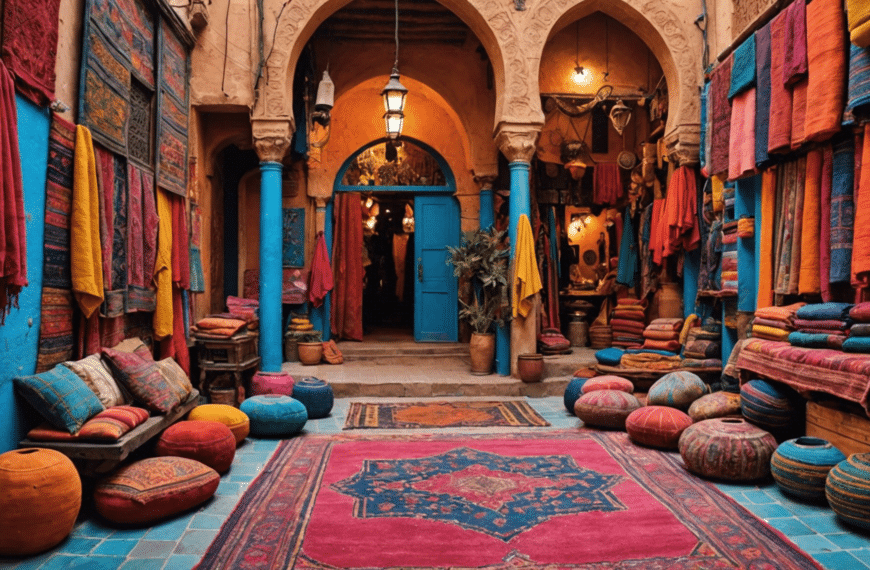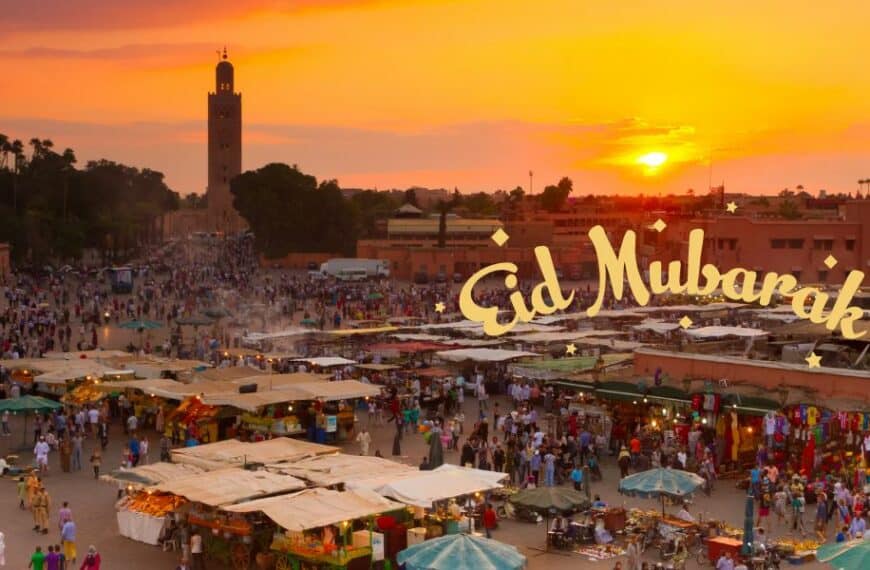Introduction to Moroccan Leather Craftsmanship
Moroccan Leathercraft: A Time-Honored Tradition
When the sun breathes life into the Moroccan landscape, a millennia-old tradition awakens in the bustling medinas and quiet workshops. Here, in the heart of Morocco, a storied craft is practiced – the art of leathercraft. Moroccan leatherwork is not merely a trade; it’s a heritage steeped in the labyrinthine history of the Maghreb, a testament to ingenuity and patience.
Leather artisans, known locally as maalems, have been passing down their expertise from generation to generation, a line of inheritance not written on parchment but etched into the hands and hearts of its keepers. Their craft begins with the selection of high-quality hides, often sheep, goat, or camel skin, which are then treated in ancient tanneries, such as the famous Chouara Tannery of Fez. It’s an alchemy of tradition, turning coarse skin into smooth, dyed leather.
The Tanning Process: A Blend of Nature and Craftsmanship
In the tanneries, hides are soaked in vats filled with a mysterious concoction of natural ingredients, each with its own role to play. Pigeon droppings and quicklime prepare the hides, while tannin-rich barks and plants infuse them with durability. Afterward, the leather is laid out on rooftops to dry under the Moroccan sun, a colorful statement against the earthen tones of the city. Once the leather reaches the perfect state of softness and hue, the true artistry begins.
Tools and Techniques: The Language of Leather Artisans
Step into the workspace of a maalem and you’ll find the air rich with the scent of leather and the rhythm of work. Each tool in the artisan’s inventory tells a story – the hammers, awls, and needles; ancient, yet effective. With these, the maalem will engrave, stitch, and sculpt the leather, imprinting traditional motifs and symbols into their creations. These intricate designs often carry meaning, inspired by Islamic geometry, Amazigh symbols, and the land itself.
From cutting the leather with precision to the delicate task of dyeing and painting, the maalems demonstrate their meticulous attention to detail. Hand-stitching, a staple of Moroccan leathercraft, is the signature of authenticity, a promise that each piece is crafted, not produced.
The Pride of Moroccan Artistry: From Functional to Ornamental
The fruits of this labor are manifold – leather bags, belts, pouffes, babouches (traditional slippers), and high-end furnishings. Every article crafted speaks the language of Moroccan culture, ready to stand the test of time and trend. The versatility of the material seamlessly blends the domains of utility and aesthetic. Each item’s embroideries and embossments tell unique stories, compelling the backdrop for a cultural voyage.
Local souks teem with these treasures, awaiting patrons who appreciate the labor of love that is Moroccan leathercraft. Emphasizing the sheer allure of these products, they are not merely souvenirs but are pieces of Moroccan soul fashioned into tangible artifacts.
Preserving the Craft: Challenges and Aspirations
Today, despite the pull of modernization, the maalems courageously uphold their calling. There lie challenges, within the competitive market and the environmental concerns raised by the tanning processes. It is the passion of these artisans and the admiration from admirers of the craft that hold the promise for Moroccan leathercraft to endure and adapt.
Educating the world about this opulent tradition and encouraging ethical tourism practices is vital. For enthusiasts, participating in local workshops or purchasing directly from artisans are meaningful ways to contribute to the sustainability of this time-honored trade.
Embarking on a Leathercraft Journey
To the untrained eye, a piece of Moroccan leatherwork could just be another accessory. However, to the connoisseurs, it carries within it a world of history, dedication, and artistry. Embarking on a Moroccan leathercraft journey is not just about acquiring an object; it’s about taking home a narrative, a piece of heritage, a testament to the human spirit and its ties with nature. It’s a treasure map that leads right to the beating heart of Morocco’s cultural grandeur.
The Rich History of Moroccan Leatherwork
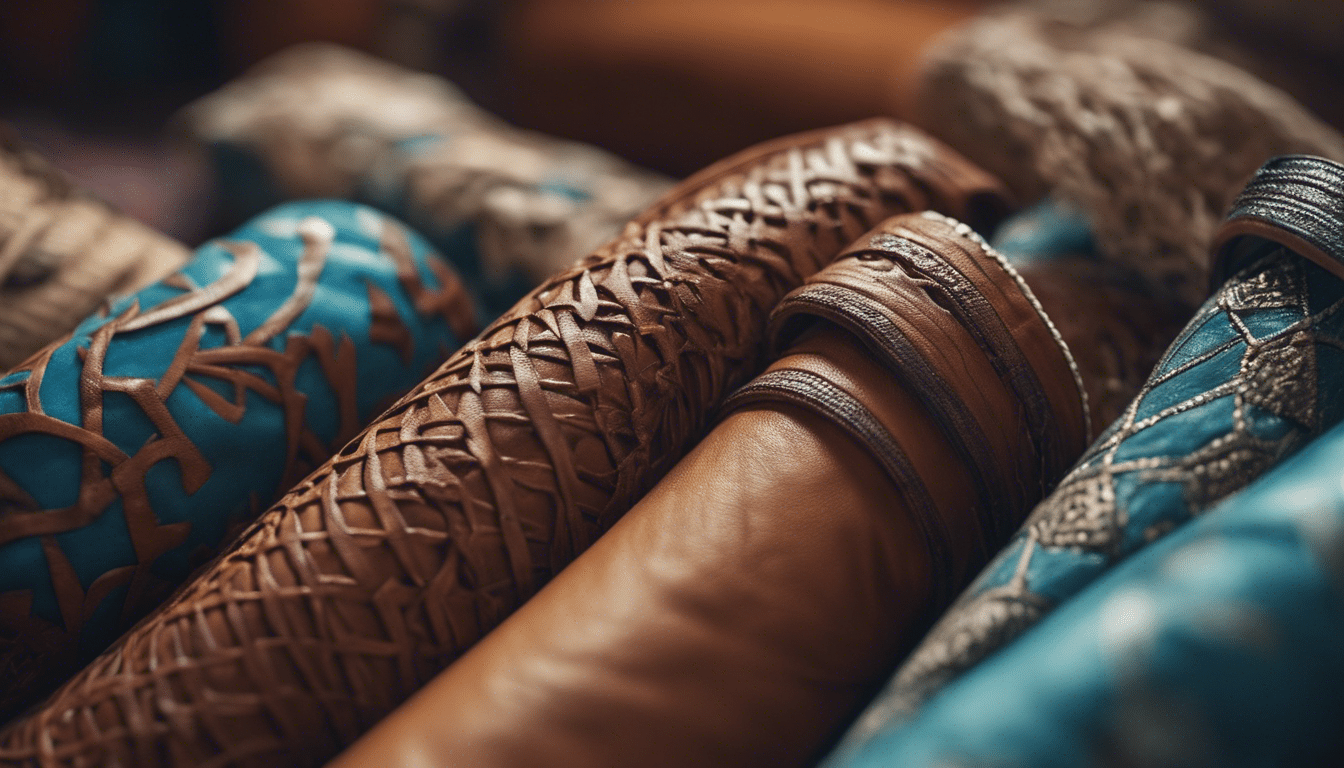
Within the tapestry of Moroccan artisanship, leathercraft stands out, boasting a glorious lineage that weaves through centuries and dynasties. Its history is as vibrant as the country’s zesty souks and stately palaces, where the scent of tanned hides and the shine of handcrafted bags whisper tales of a bygone era.
The Ancestral Tradition of Tanning
The journey of Moroccan leather begins in the iconic tanneries, like those in Fez and Marrakech that have become almost mythic to enthusiasts. Dating back to medieval times, these historic sites echo the prolonged engagement of Moroccans with leather tanning – a process virtually unchanged since the days when caravans of traders brought fame and fortune along the Silk Roads.
Employing natural methods, artisans use vegetable tannins from pomegranate skins and cedarwood, preserving the environment and the wearer’s health. The traditional tanning makes Moroccan leather highly prized, its suppleness and natural fragrance a testament to the meticulous craft.
Craftsmanship in Every Stitch
The true magic of Moroccan leatherwork is seen in the hands of the maalems, master craftsmen whose skills have been handed down through generations. Intricate designs often feature on satchels, belts, and babouches – those quintessential Moroccan slippers. Each article is rich with cultural symbolism and ornamental flourishes, embodying Morocco’s distinct aesthetics.
Stitched with care and precision, these leather pieces are durable artworks, often customized to encapsulate personal stories or bear the marks of regional styles. From the bustling lanes of the medinas to the serene, sun-drenched workshops, leather artistry remains an integral part of Moroccan culture, coloring the fabric of daily life and custom.
Leather in Moroccan Society
Leather products are not merely objects of beauty, but functional components of Moroccan society. The leather djellabas and poofs, for example, are not just tourist collectibles, but staples in any local home, where craft meets convenience. The breadth of leather use extends to intricately bound books and majestic saddlebags, shedding light on the Moroccan penchant for blended utility and aesthetic.
Furthermore, the Moroccan leather industry is a robust contributor to the local economy and a flagbearer of sustainable practices. Artisans today are blending ancient methods with contemporary styles, ensuring the livelihood of their communities while catering to modern tastes.
The Future of Moroccan Leathercraft
As the global market for handcrafted goods expands, Moroccan leather finds itself in a unique position. It stands at the crossroads between tradition and innovation – an intersection of historical artisanship that continues to adapt and thrive. Designers and stylists around the world are embracing Moroccan leather, infusing it with modern approaches while preserving its classic virtues.
In this age of authenticity, Moroccan leather goods not only recount the nation’s history but also encapsulate its steadfast spirit. For those who seek genuine heritage and artistry, Moroccan leathercraft offers something that is both timeless and timely – a narrative woven from the heart of Morocco’s rich artisanal soil.
Distinctive Features of Moroccan Leather
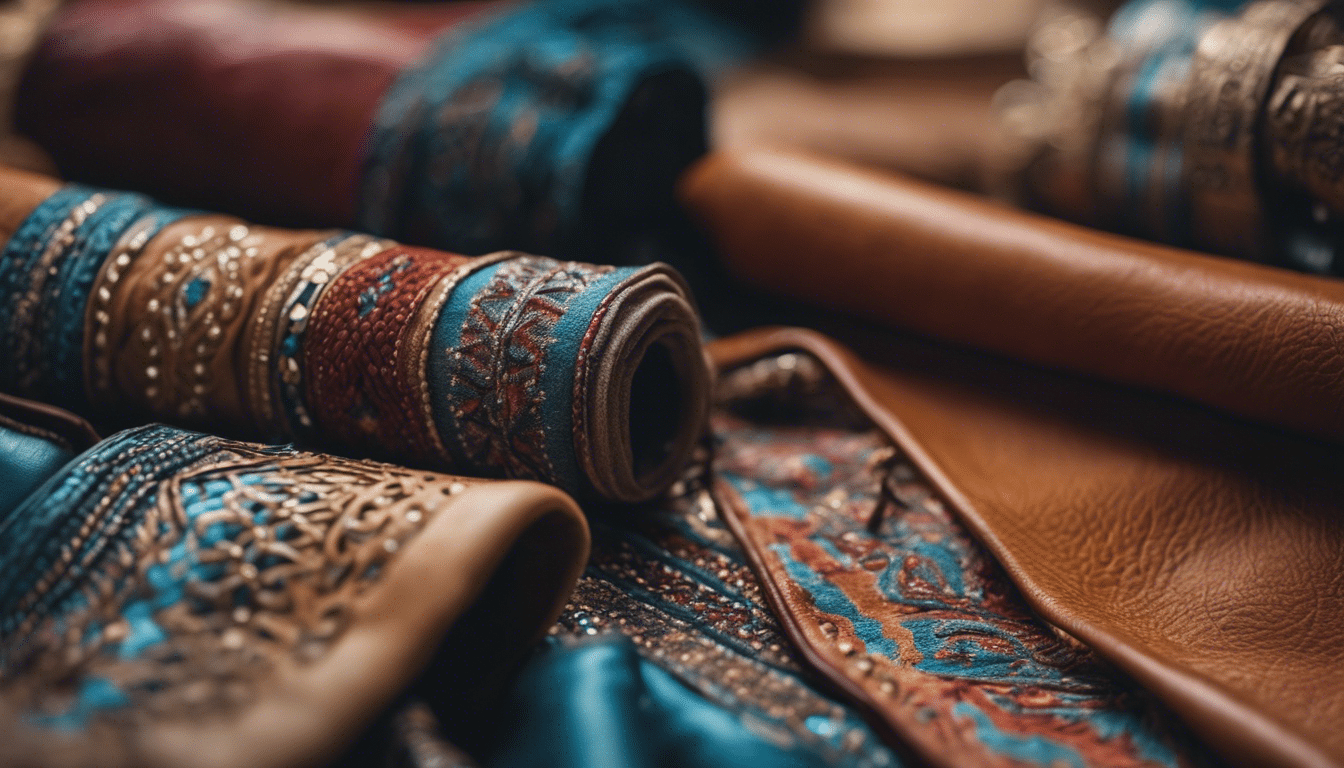
The heart of Moroccan craftsmanship beats with a rhythm defined by the sumptuous textures and rich hues of its world-renowned leatherwork. As a traveler drawn to the tactile and the timeless, one cannot help but be enchanted by the distinctive features of Moroccan leather—an artisanal tapestry woven through centuries of tradition and skill.
The Tanning Process: A Dance of Tradition and Technique
In the heart of Morocco, you’ll find the tanneries where the air is rich with the scent of transformation. Here, leather is not merely produced; it weaves a narrative of nature’s alchemy. The traditional process called tanning, involving natural ingredients like pigeon droppings, quicklime, and plant-based compounds, enlightens the observer to the unhurried rhythm of creating something truly unique. This intricate dance between human hands and earthly elements is what imbues Moroccan leather with its unrivaled quality and character.
Sustainability: Embracing Eco-friendly Practices
The echo of sustainability resounds through the labyrinthine souks. In a conscious effort to honor the earth, Moroccan artisans progressively reach for natural dyes derived from henna, saffron, and indigo to stain their leather. This sustainable pursuit not only highlights the ecological ethos but also guarantees that each piece carries a distinctive shade as various as the Moroccan landscape itself.
Artistry in Every Stitch: The Hallmark of Moroccan Craftsmanship
When talking about Moroccan leathercraft, one must pay homage to the meticulous artistry visible in every stitch. Artisans draw from a repertoire of skills passed down through generations to create masterpieces such as pouffes, bags, and belts. The signature geometric patterns and embossed designs are a testament to the cultural heritage, each hand-tooled element a stroke of genius.
Variety and Versatility: The Wide Array of Leather Goods
- Pouffes and Ottomans: Bursting with color and comfort, they are staple adornments in Moroccan homes.
- Handbags and Wallets: Fashioned for both utility and elegance, they make a statement of finesse.
- Belts and Footwear: Designed for durability, they marry the ornate with the practical.
- Jackets and Clothing: Tailored for the connoisseur, they wrap the wearer in sumptuous warmth.
A journey through the offerings of Moroccan leather goods is akin to a stroll through a gallery, where the variety extends beyond imagination. The versatility of Moroccan leather allows for an array of goods that satisfy a spectrum of preferences, from the boldly bohemian to the understated elegance.
Experience the Richness: Inviting the World Into Time-Honored Traditions
As you find yourself amidst the vibrant hum of a Moroccan market, surrounded by leather goods rich with history, take a chance to experience the texture, smell, and authentic workmanship. You’re not merely observing a craft; you’re being invited into a world of time-honored traditions, where every piece of Moroccan leather stands as a vivid storyteller, weaving tales through its distinctive features.
In the realm of Moroccan leathercraft, we understand that time stands still when beauty is being created. It is an invitation—to touch, to wear, to carry—a piece of Morocco with you, long after the desert sun has set on your journey.

